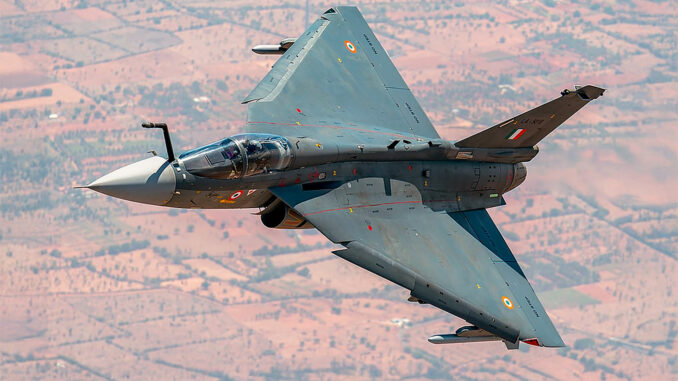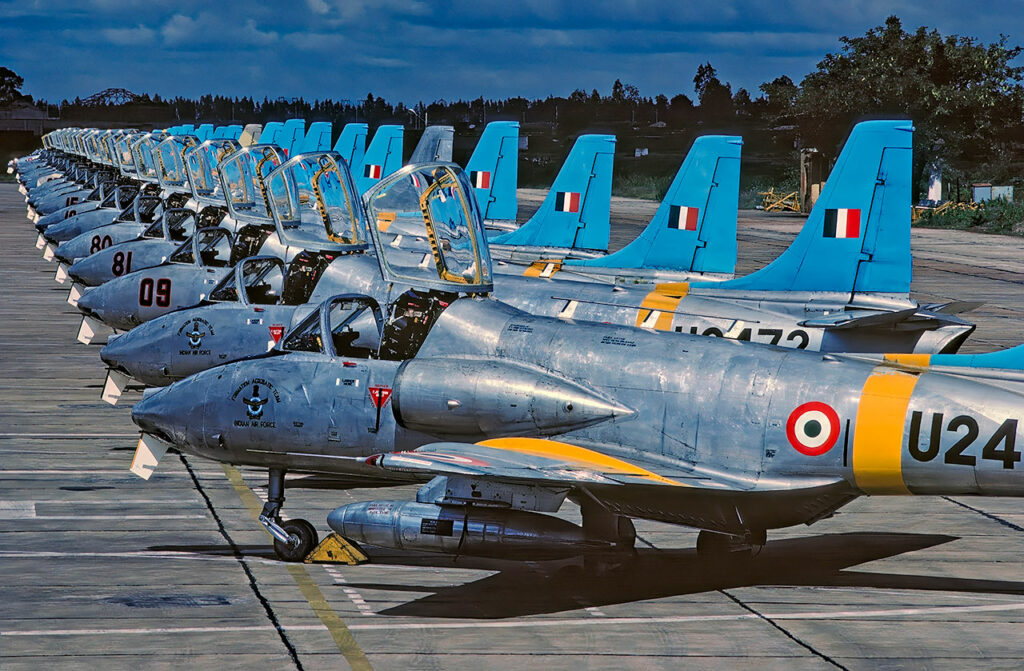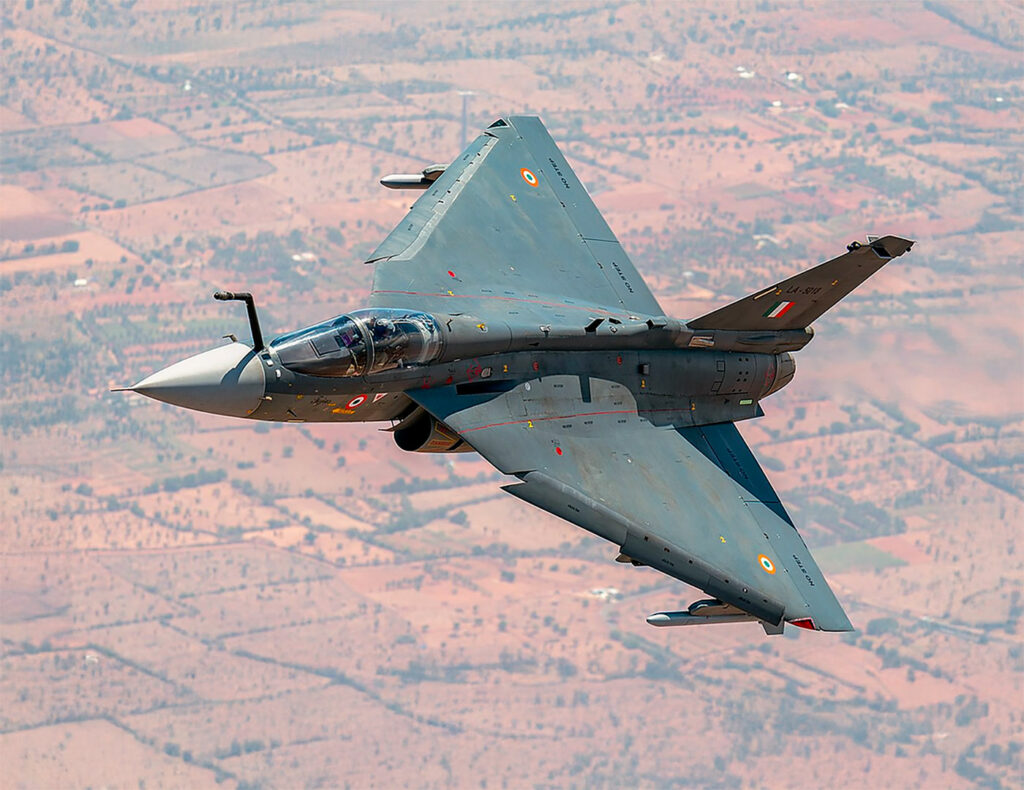
Persistent delays in the delivery of fighter planes to India raise questions about the efficiency of local production and its implications for national defense.
India, through Hindustan Aeronautics Ltd (HAL), is striving to strengthen its indigenous military aircraft production capacity. However, significant delays in the delivery of fighter aircraft, notably the Tejas Mk-1A, have been observed. These delays are attributed to supply chain issues, technological dependencies and certification challenges. This situation affects the operational capacity of the Indian Air Force (IAF), which currently operates with 31 fighter squadrons, below the target of 42. Initiatives are underway to improve the situation, including collaborations with the private sector and structural reforms.
The Indian Air Force’s criticism of HAL
During the Aero India 2025 exhibition in Bengaluru, the head of the Indian Air Force, Air Chief Marshal A.P. Singh, expressed frustration at the delays in the delivery of fighter jets by Hindustan Aeronautics Ltd (HAL). He highlighted a lack of trust in the state-owned manufacturer, stating: “I do not have faith in HAL, which is a matter of great concern.” This statement reflects growing concern about HAL’s ability to meet its commitments to the IAF.
The IAF had ordered 83 Tejas Mk-1A aircraft for 480 billion Indian rupees (approximately 5.4 billion euros) in February 2021, with initial delivery scheduled for March 31, 2024. However, delays due to supply chain issues, including the late delivery of F404 engines by General Electric, have pushed back this deadline. As a result, the IAF now plans to acquire 97 additional aircraft for approximately 670 billion Indian rupees (approximately 7.5 billion euros), but the current delays raise concerns about HAL’s ability to fulfill these new orders.

The challenges of indigenous production
The indigenous production of military aircraft in India is hampered by several factors. The delays in the delivery of F404 engines by General Electric illustrate India’s continued dependence on foreign suppliers for critical components. This dependence complicates the achievement of defense self-sufficiency objectives.
In addition, delays in key certifications have also contributed to delivery delays. These delays can be attributed to complex bureaucratic processes and a lack of coordination between the various stakeholders involved in the development and production of the aircraft.
The quality of locally produced aircraft is another major concern. According to Air Marshal B.K. Pandey, over the past 45 years, the IAF has lost approximately 1,100 combat aircraft, an average of 24 aircraft per year, mainly due to technical failures. These incidents raise questions about manufacturing standards and quality control processes at HAL.
Consequences for the operational capacity of the IAF
The delivery delays and quality issues have direct repercussions on the operational capacity of the IAF. Currently, the IAF has 31 fighter squadrons, well below the target of 42 squadrons needed to ensure adequate air cover against potential threats in the region.
This reduction in the fleet compromises the IAF’s ability to conduct effective air operations, particularly in a context of growing tensions with neighbors such as China and Pakistan. Continued dependence on imports of military equipment further complicates the situation, limiting India’s strategic flexibility in defense matters.
Initiatives to strengthen indigenous production
To address these challenges, India has launched several initiatives aimed at strengthening its indigenous military aircraft production capacity. For example, Tata Advanced Systems Ltd. and Airbus have collaborated to produce the C-295, intended to replace the IAF’s aging Avro fleet. In addition, structural reforms have been implemented, including the transformation of 41 arsenals into seven new public sector defense companies in 2021, to streamline production and improve efficiency.
Despite these efforts, dependence on imports remains significant. According to SIPRI data, India’s arms imports decreased by 11% between 2013-2017 and 2018-2022, but this reduction is insufficient to guarantee self-sufficiency in defense. Continued efforts to strengthen indigenous production are therefore essential to improve India’s defense capability.
Future prospects
India is at a critical crossroads with regard to its indigenous production capacity for military aircraft. The current delays and associated challenges underscore the need for a more integrated and coordinated approach to the development and production of defense equipment.
Improving manufacturing processes, investing in research and development, and reducing dependence on foreign suppliers for critical components are essential steps in strengthening indigenous production capacity.
Improved manufacturing processes, investment in research and development (R&D) and reduced dependence on foreign suppliers are priority areas for ensuring the growth of indigenous combat aircraft production in India. Reliable and efficient domestic production would make it possible to meet the needs of the Indian Air Force (IAF) while strengthening the country’s strategic autonomy.
The need for massive investment in R&D
The delay in the delivery of the Tejas Mk-1A aircraft demonstrates that local production is still heavily dependent on foreign technologies. For example, the General Electric F404 engines, which are essential for the Tejas, come from the United States, which limits India’s technological independence. To compensate for this weakness, the Defense Research and Development Organization (DRDO) launched the Kaveri project, aimed at producing an indigenous fighter aircraft engine. However, this program, initiated in the 1980s, has not yet resulted in an operational engine in 2025.
The budget allocated to research and development in the defense sector remains insufficient compared to the major arms-producing countries. In 2024-25, only 6% of India’s defense budget is devoted to R&D, compared to 15% in the United States and 12% in China. This gap partly explains the technological lag that India is experiencing in the field of military aeronautics. To achieve the objective of self-sufficiency, it is essential to increase these investments and attract more engineers and experts specialized in high technology.

The impact of reforms and private sector participation
In view of the shortcomings of Hindustan Aeronautics Ltd (HAL), India is seeking to integrate the private sector more fully into the defense industry. Several companies, such as Tata Advanced Systems Ltd. (TASL) and Mahindra Aerospace, are positioning themselves in this market. The example of the partnership between Airbus and Tata for the production of C-295 aircraft illustrates this transition. This program, estimated at 2.5 billion euros, aims to replace the aging fleet of Avro HS-748s and marks a step towards the diversification of defense players.
This opening up to the private sector could increase competitiveness and improve production quality, which are essential elements in avoiding the manufacturing defects observed in previous models. However, the integration of the private sector requires clear regulations and a contractual framework to guarantee the reliability of the equipment delivered.
Insufficient defense budget to modernize the air force
The modernization of the Indian air force is being held back by a constrained defense budget. In 2024-25, India plans to spend 12.9% of the central budget on defense, compared with 17.8% in 2016-17. This decrease in the share of the budget allocated to the armed forces directly affects the country’s ability to renew its fleet.
Of the 5.8 trillion Indian rupees (approximately 67 billion euros) allocated to defense in 2025-26, more than 4.8 trillion (approximately 57 billion euros) are allocated to personnel expenses (salaries and pensions). Only 1.9 trillion rupees (22 billion euros) are allocated to investment in equipment, including the purchase and modernization of fighter planes.
This budgetary imbalance complicates plans to acquire and modernize combat squadrons. For example, the order for 97 new Tejas Mk-1As is still subject to a budget increase and guarantees of rapid production. By comparison, China invests around 240 billion euros in its army every year, almost four times more than India, enabling it to accelerate its air modernization programs.
India faces a major challenge in terms of domestic production of fighter jets. The delays and quality issues experienced with the Tejas Mk-1A reveal significant technological dependence, an underperforming supply chain and ineffective management of production deadlines.
To remedy this, several solutions must be implemented:
- Increase investment in R&D to reduce dependence on foreign components.
- Strengthen the private sector by facilitating collaboration with national and international manufacturers.
- Reform HAL to improve production reliability and speed.
- Review the defense budget structure to ensure sufficient funding for equipment purchases.
Without effective modernization of its military aviation, India risks losing air superiority to its regional rivals. The next few years will be decisive for the country’s defense strategy and its ambition to become a major player in the global aviation industry.
War Wings Daily is an independant magazine.